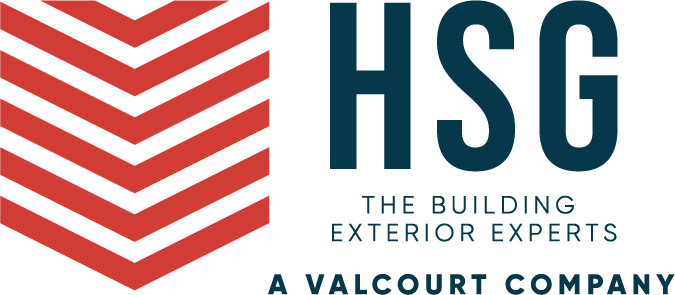
Your building’s façade conveys the first impression of aesthetics and serves as your first line of defense against environmental factors. The Occupational Safety and Health Administration (OSHA) requires you, as a building owner, to mitigate risks and provide a safe working environment for those performing work on your building, including general maintenance. This article covers the essential role of safety measures in mitigating risks through safe building façade access and proper fall protection.
The Significance of Safe Building Façade Access
Building collapses are rare. The risk of that happening poses a significant threat to public safety. For this reason, many of our major cities in the U.S. have façade ordinance laws that require inspections. Here are some examples:
- Chicago is home to the Willis Tower, the treasure of the Windy City skyline. Our nation’s third-tallest building, including antennas, reaches 1,750 feet. Depending on the type of building, Chicago requires façade inspections to occur between four and 12 years for buildings over 80 feet tall.
- Philadelphia was home to the world’s tallest building from 1894 to 1908. Nowadays, Philly boasts nearly 60 skyscrapers. Façade inspections are required every five years for buildings exceeding six stories or with an appurtenance taller than 60 feet.
Safe building façade access facilitates inspections while allowing you to maintain and repair your façade, addressing minor issues before they become big problems. Window cleaning, pressure washing the façade, and leak repairs allow you to extend the life of your building, preserving its value while protecting the public. In addition, safe access is critical to creating the safe working environment OSHA requires, along with proper training, equipment, and protocols.
Overview of Building Façade Access Methods
Accessing the façade, especially on taller buildings, is not for the faint of heart. Workers need to feel physically and psychologically safe when performing façade work. This environment allows them to maintain their focus, keep safety at the forefront, and actively speak up about safety concerns. The equipment they use to traverse the façade has many shapes and forms.
- Rope Descent Systems (RDS): Think of rappelling, but for work! Workers use ropes to descend the side of the building for window cleaning or minor repairs on high-rise buildings.
- Pro: It’s quicker to set up, less bulky, and more cost-effective than scaffolding.
- Cons: There’s a height limit of 300 feet by OSHA standards due to the combined risk of lengthy rope and wind.
- Suspended Scaffolding: When scaffolding from the ground up isn’t enough, scaffolds can suspend from an overhead structure, allowing workers to move to the desired level.
- Pro: It’s stable, can handle a lot of weight, and allows multiple workers and equipment to operate on the platform at once.
- Con: It takes time to set up and take down and can be expensive and obstructive.
- Lifts (Aerial Lifts and Booms): Because they offer mobility, aerial lifts provide more flexibility than ladders and scaffolding. In extreme cases, boom lifts can reach a couple hundred feet but mainly provide façade access for the first few stories of a building.
- Pro: They’re fast and flexible.
- Con: They can only reach some places, are costly to rent, and are limited by the ground around the building, such as uneven surfaces or space constraints.
- Building Maintenance Units (BMU): These are permanent setups on the tops of the tallest skyscrapers. They’re like a little car on a track going around the roof, lowering a platform down the side.
- Pros: They can cover the entire building and are reusable.
- Cons: They are expensive to install and maintain and are only financially viable with tall or complex buildings.
Every method requires specific training and routine inspection to ensure safety and meet OSHA fall protection regulations.
Identifying Your Building’s Façade Access Needs
The primary goal is to create and maintain a safe working environment for anyone accessing your building façade. Begin with assessing your building’s architecture, safety incidents or concerns, and recent façade inspections.
HSG assesses your façade access needs with a full inspection and a customized plan to achieve compliance. You can rest easy, as our expert team takes the worry of non-compliance off your plate. Our end-to-end solutions cover design and installation, followed by post-install support for testing and certification.
Elevating Safety for Building Façade Access
Whether you are a building owner, an employer, or a worker at heights, you have a role in fall protection. Each role relies on the other to carry out its respective responsibilities to ensure safety and reduce injuries and fatalities resulting from falls.
HSG stands at the forefront of safety. We are ready to assist you in getting your property up to speed in terms of safety, OSHA compliance, and aesthetics. Contact HSG for information on examining your façade access needs and fall protection systems.



